JEONG JEONG JU: Luminous City
본문
‘Light’ as Experience and Illusion
The act of fully enjoying art, including the external world, involves a series of ‘processes’, beyond emotional stimulation, through sense organs. For both producers and connoisseurs of art, aesthetic behavior is not simply perceiving the products of impractical or noble ideas. It is a process of mutual awareness of each experience and thought only in a balance between the subjective act of creation and the passive element of appreciation. Media artist Jeong Jeong-ju, who has dealt with the relationship between spatial structure, light, and perspective, aims for an open interpretation of the work through individual elements such as light, place, and gaze, rather than the viewer's sensory experience.
The Gwangju Media Art Platform’s special invitation exhibition <Jeong Jeong-ju: Luminous City> focuses on the mediating nature of ‘light’ to discuss the duality and ambivalent characteristics of light experience, Based on the concrete material of urban experience, Jeong Jeong-ju talks about the mode and presence of life within a social context. As revealed in the theme of ‘Luminous City’, the emitting artificial light guarantees a certain kind of futility along with the desire of the city in neoliberalism. The idea of light perceived by us implies all of the conflicting qualities, such as religious transcendence and the spectacle of urban civilization, nature and artificiality, hope and nihilism, the spiritual world and the material world, and sight and touch. While studying in Germany, Jeong Jeong-ju's awareness of light in his early works came from the anxiety he experienced. Beyond being warm and soft, the sunlight illuminating his room gave him a sense of fear and tactile disparity, as if “a giant’s tongue was licking my small room” at one point, which led to an exploration of light across metaphysics and the physical world and its polysemy. In this process, the eyes, which are a sensory organ that perceives light, acts on space and place as evidence of the act of seeing, that is, gaze, allowing one to experience light or the external world illuminated by light.
When this experience of light by gazing is defined as an act of connection between the subject of perception and the external world, the city's radiant light in one direction contains negative meanings such as worldly desire, lack of communication etc. In these exhibits, artificial light sources accumulated in places, where certain phenomena may occur and where something has been done or has taken place, are clearly constructed or distorted as they project a clear image and sometimes diffusely reflect around the space where the light source is located. In this exhibition, the artist inversely metaphorically intersects the gaze toward the outside along with actions that respond to stimuli or wounds received from the outside world, including others. Jeong Jeong-ju explains that the external gaze evokes tactile responses, such as the ‘tongue of light’ in the early stages of his works.
The distortion of the gaze and the tactile sensation shown in his works are a kind of light illusion that draws the viewer into the light that sweeps through the entire exhibition space. The afterimage of the illusion is distorted due to the mirror effect, and the familiar city image does not show the entire monitor screen, but approaches and then flickers as a definite object due to mirrors or structures erected in the middle. After all, the interaction of light, space, and gaze induces a visual illusion like seeing a series of completed buildings.
In fact, the shape derived from light and gaze is originally light, and the deconstruction and composition of the gaze is soon repeated by the viewer's experience and thoughts. The duality of light, which goes back and forth between invisibility and visibility, arouses the artist’s awe and anxiety, which expand further to make him look at the illusion of an individual standing in a network of relationships comprising family, home, and society. The experience of light mentioned in this exhibition may not be just light that stimulates sense organs, but a mediating activity to bring out reflection on seeing and what is seen, and on subject and object.
According to Pragmatism philosopher John Dewey, all ‘experiences’ are the result of interactions between living creatures and certain aspects of the world where they live. The question of whether today's art will simply draw attention to the work through the flashy medium, or whether it will lead to meaningful communication through media located close to daily life, including on and off, is still an important issue to ensure medium specificity. To elaborate, I think it is time to consider whether process-type art, named after art transferred to life, can go beyond visual stimulation as a result of mutual communication between producers and viewers. I hope that Jeong Jeong-ju's work, which returns to the light and enumerates the products of his private experience, will be a process that moves toward a complete experience, and that the viewer can also become a part of a completely continuous situation in that process.
About the Work
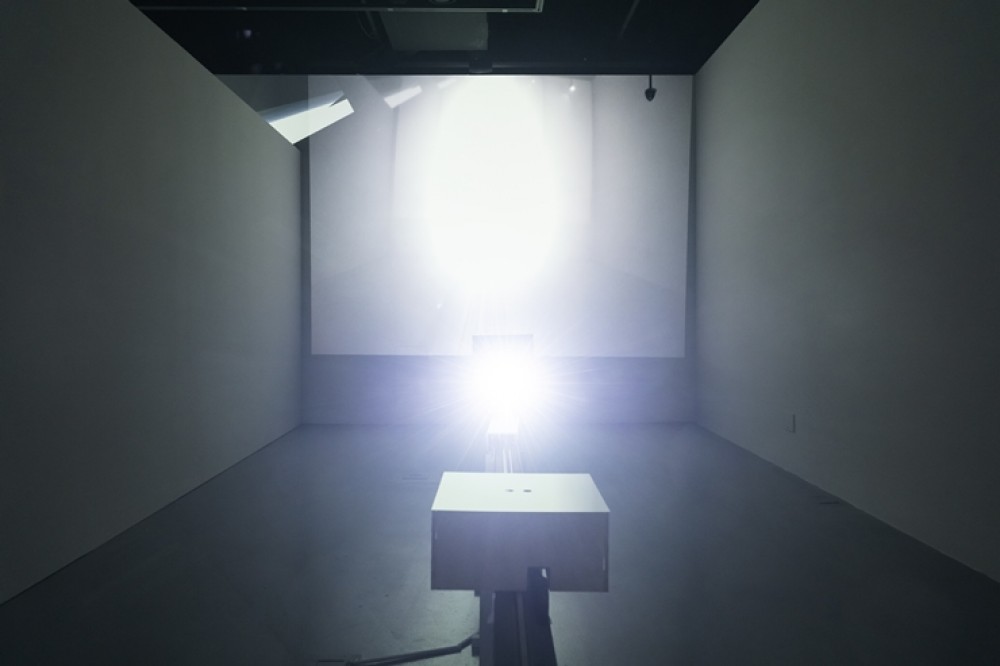
Name
Jeong Jeong-juTitle
GazeYear
2024Scale
variable sizeMaterial
two rail devices, projector, video cameraDescription of work

Name
Jeong Jeong-juTitle
4 RoomsYear
2004Scale
variable sizeMaterial
rotating device, 1 projectorDescription of work
In addition, the video captured through the rotation technique rotates as if brushing across the entire exhibition hall, which is a public space, to project a private image.
Viewers experience the overlapping layers of the living room, which is a personal space, and the exhibition hall, which is a space for showing at the same time. This is not simply a visualization of light, but a reflection on the mixture of seeing and what is seen, and between subject and object.
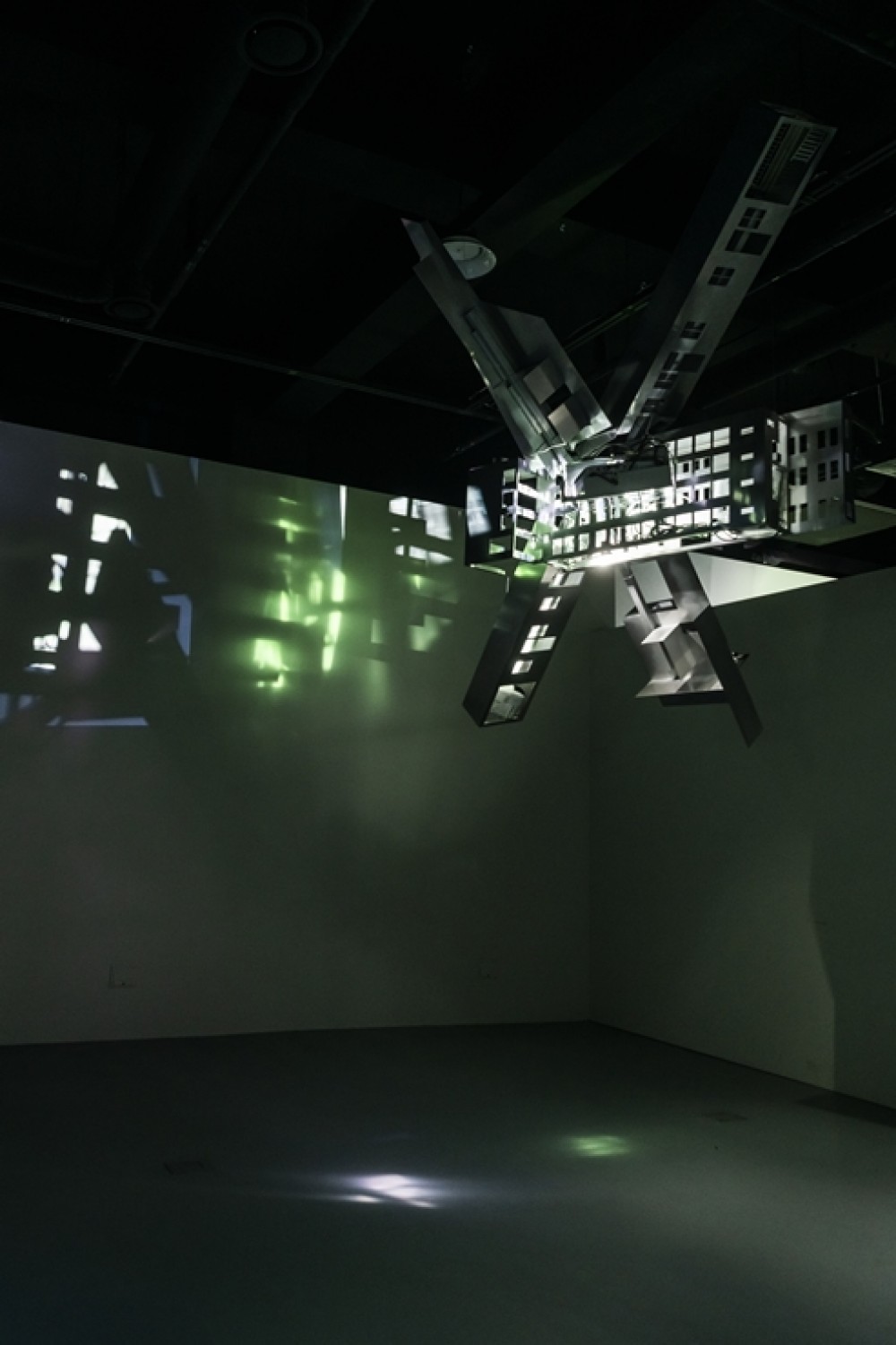
Name
Jeong Jeong-juTitle
Metaphysical Star 24-01Year
2024Scale
320×270x260cmMaterial
프로젝터와 카메라(각 3개)·스테인리스 스틸Description of work
The videos, which are reflected on the metal surface inside the model and scattered like fragments throughout the exhibition hall, turn into an afterimage of light. Personal memories, social memories, and memories of places permeate the exhibition space like traces of light of unknown origin permeating the night.
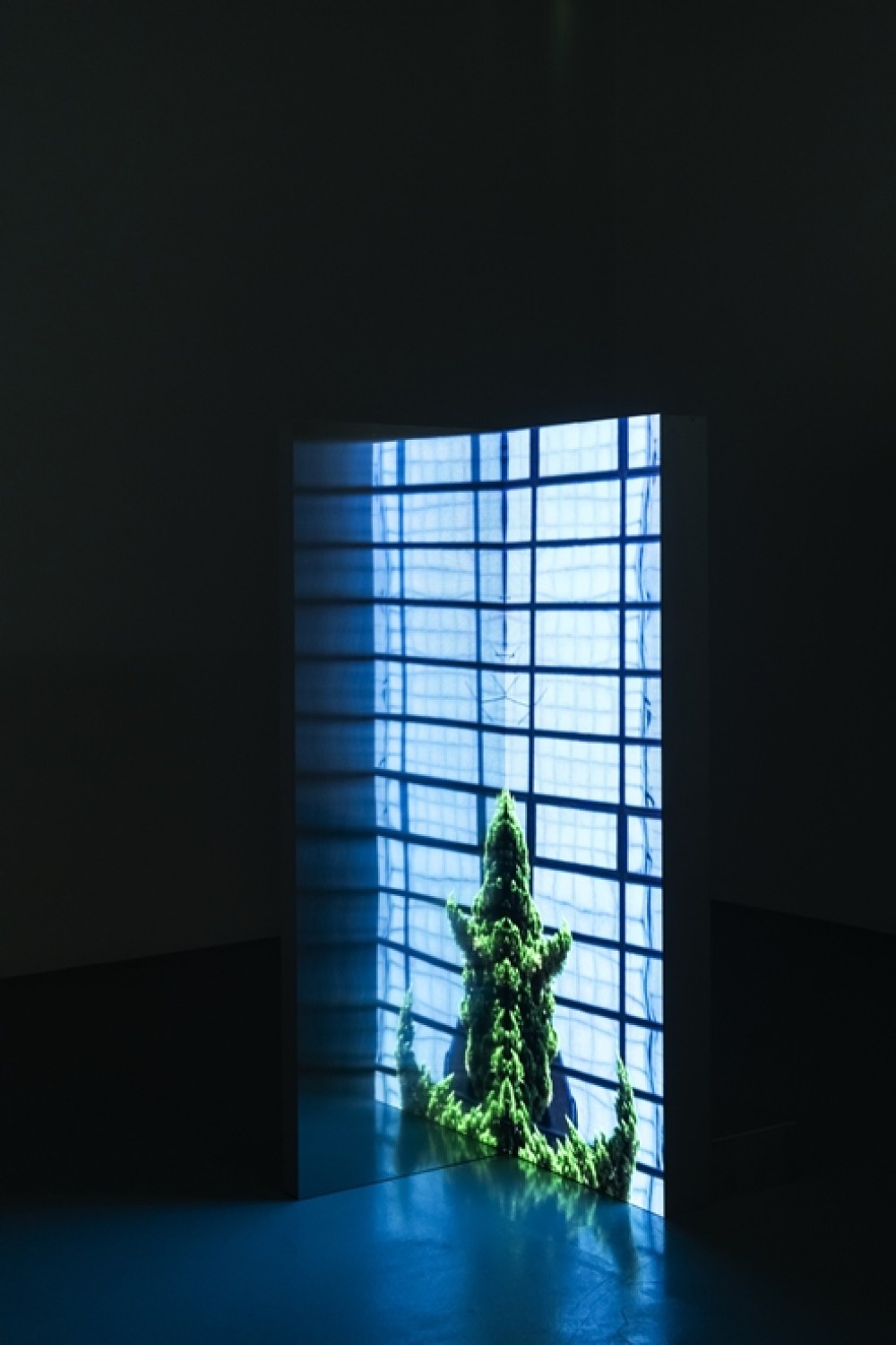
Name
Jeong Jeong-juTitle
noise 24-01Year
2024Scale
73x192x80cmMaterial
LED electric display board, stainless steelDescription of work
The female body, hand movements, and the surface of the building appearing in the work are reflected in the mirror, and react with the changing colors of light while becoming grotesquely distorted or expanding. This work, which metaphorically intersects stimulation from the outside and, conversely, the gaze toward the outside, talks about the duality and ambivalent nature of external experience in the interaction of light, space, and gaze.
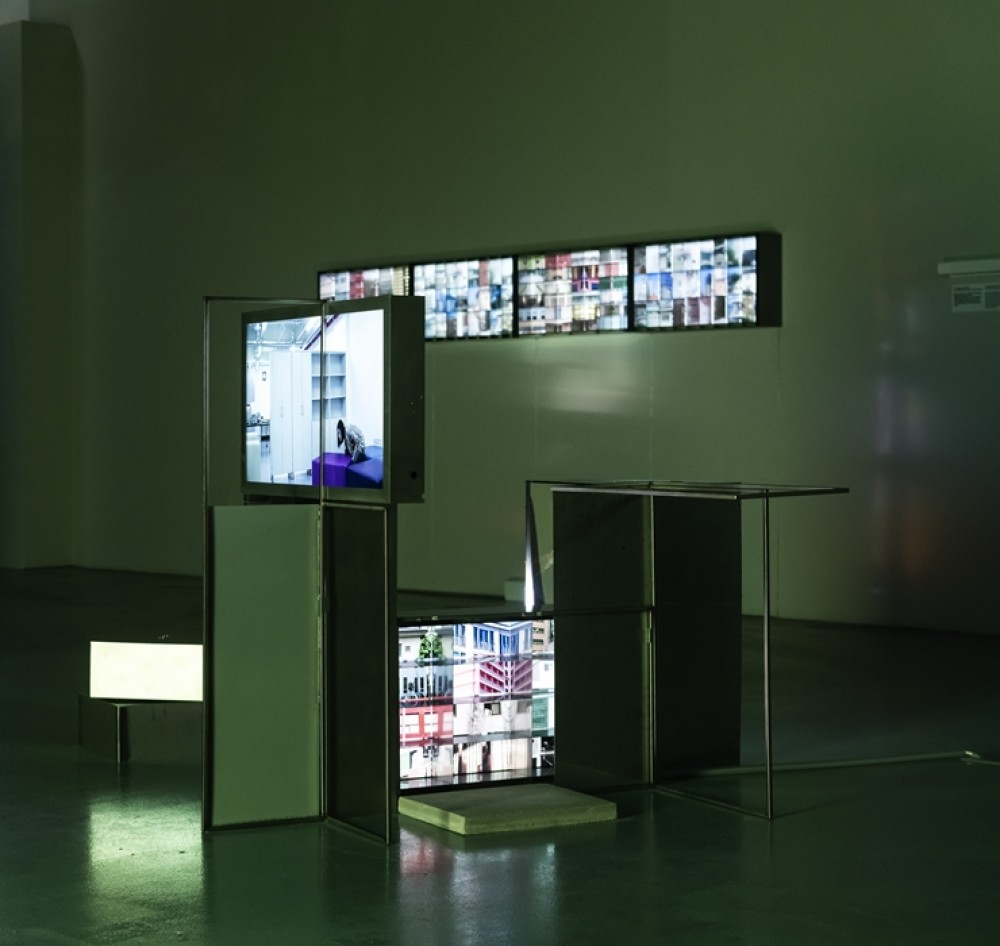
Name
Jeong Jeong-juTitle
Luminous City 24-02Year
2024Scale
145x124x118cmMaterial
4 grid monitors, stainless steel, cementDescription of work

Name
Jeong Jeong-juTitle
27 rooms-24-01CYear
2024Scale
2,930x430x190cmMaterial
4 grid monitors, stainless steelDescription of work
The gaze that repeatedly approaches and moves away from a window or hole in a building feels like a virtual gaze coming towards the viewer.
While the shape, texture, and color of the building radiated through the monitor screen are reflected on the metal surface, the building image, color, and light are reduced to some kind of flicker.
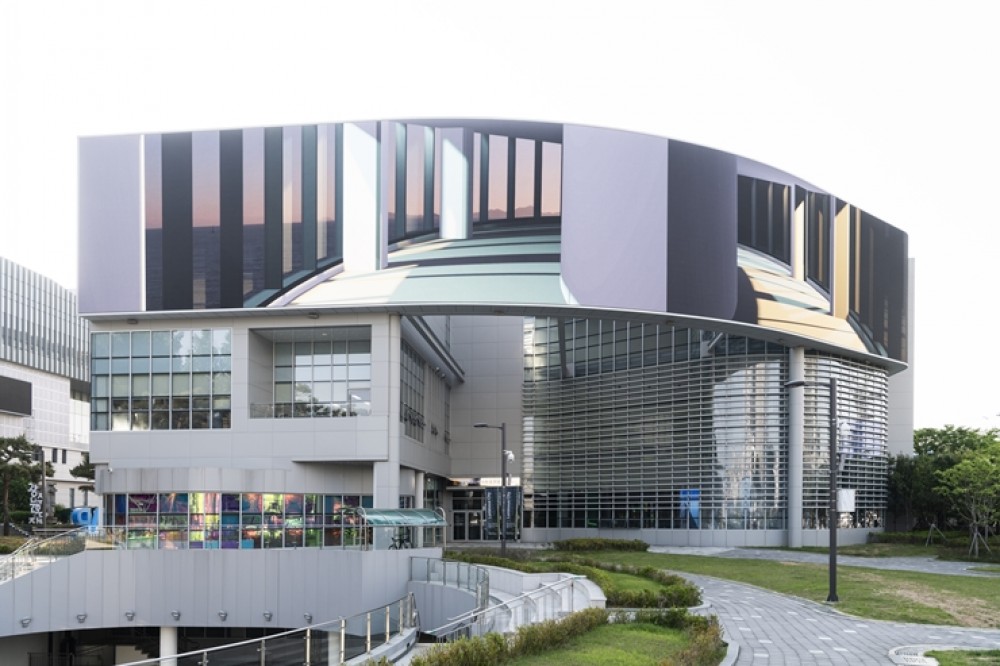
Name
Jeong Jeong-juTitle
Tongue of Light – G.MAP versionYear
2024Scale
6′ 40″Material
media facadeDescription of work
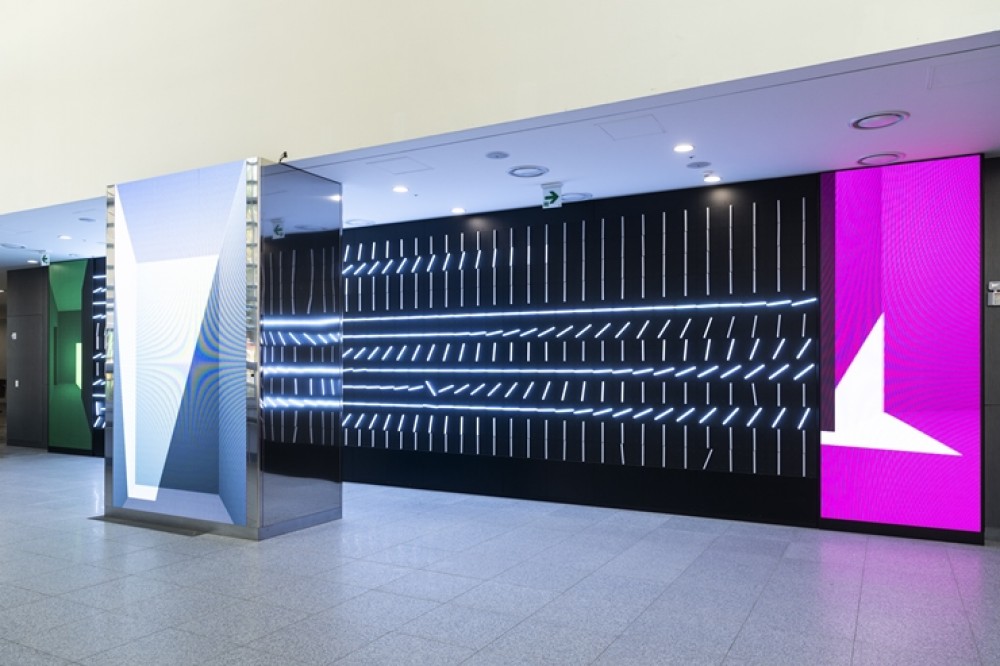
Name
Jeong Jeong-juTitle
Hall 24-01C-G.MAP versionYear
2024Scale
each 4′ 26″Material
3D animation·3channel videoDescription of work
TOP
